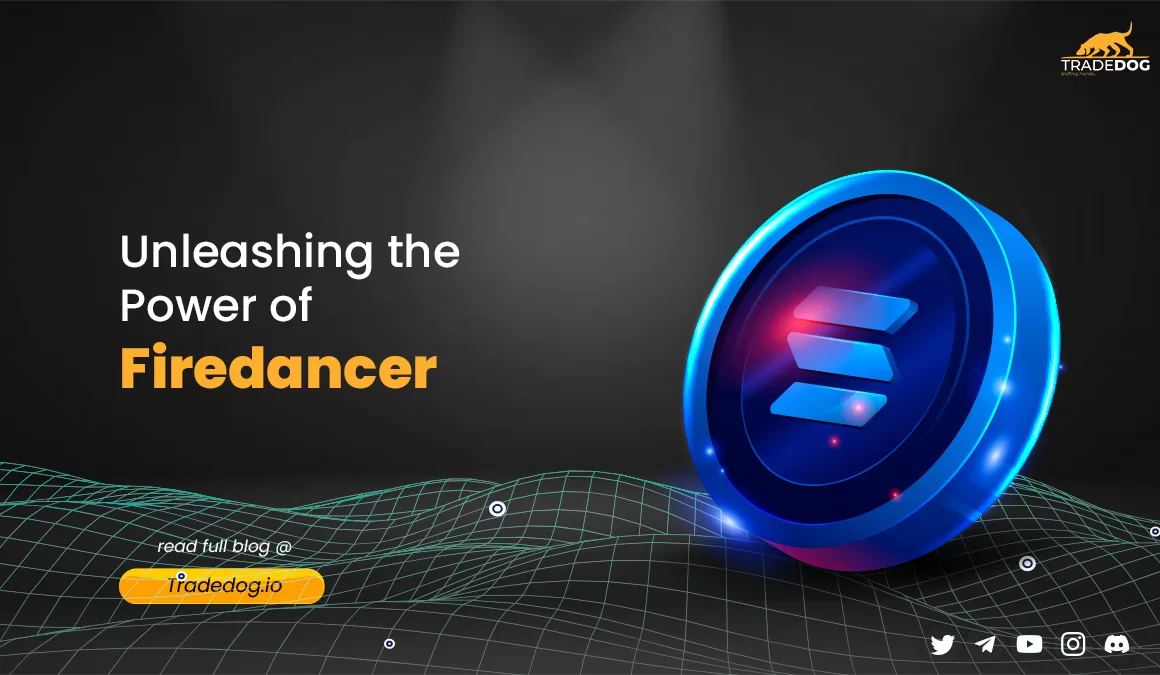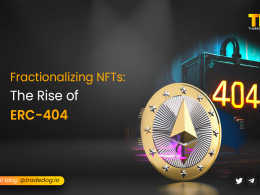Quick Links
Solana, one of the most promising layer-one blockchains in the web3 ecosystem, is about to evolve significantly by introducing a new validator client called Firedancer. Developed by Jump Crypto, Firedancer aims to enhance Solana’s current validator client, offering improved performance, scalability, and efficiency. In this blog, we will explore the details of Firedancer, its advantages over the existing Solana node client, and the underlying technology that powers it.
What is Firedancer?
Firedancer is a next-generation independent validator client explicitly designed for the Solana blockchain. Its primary purpose is to augment Solana’s current and only validator client by introducing client diversity and unlocking the potential for increased performance and scalability. With a focus on redundancy and performance improvements, Firedancer has the potential to revolutionize the Solana network. Kewin Bowers, Chief Science Officer at Jump Crypto, is leading the development of this project. He has a background in computational physics and has worked with pushing supercomputers to the extremes of scale his entire career.
Firedancer’s Technological Foundation
Developed primarily using C and C++, Firedancer leverages the strengths of these programming languages, known for their hardware performance and reliability. Using C and C++ enables Firedancer to deliver high operation performance and memory efficiency, making it an ideal choice for building high-performance software. While early releases of Firedancer have some compatibility with Rust, the project’s long-term focus will remain on a C/C++-based codebase to align with its underlying language and logic.
Comparison between Firedancer and the Current Solana Node Client
To understand the significance of Firedancer, it is crucial to compare it with the limitations of Solana’s current validator client. By doing so, we can assess the improvements that Firedancer brings to the table.
Limitations of the existing Solana node client
- Simultaneous Transaction Processing: Solana’s current validator clients have a limited capacity for processing transactions concurrently. This limitation can lead to slower transaction processing and potential bottlenecks, hindering the network’s efficiency.
- Support for sharding: The current Solana node client lacks support for sharding, a technique that allows blockchains to scale horizontally by dividing the network into smaller pieces called shards. This absence of sharding support limits the scalability of the Solana network as it continues to grow.
Advantages of the new Firedancer node client
Firedancer overcomes the limitations of the existing Solana node client and brings several improvements to the table, including:
- Sharding Support: Firedancer also introduces sharding support, enabling the Solana blockchain to scale horizontally, improving its scalability as the network grows.
- Enhanced Simultaneous Transaction Processing: Firedancer supports more concurrent transactions, resulting in faster processing and reduced bottlenecks. By utilizing the power of C and C++, Firedancer achieves improved simultaneous processing performance. Moreover, compatibility with Rust-based decentralized applications ensures efficiency benefits for developers.
- Improved Consensus Protocol: Firedancer employs a modified version of the Solana consensus protocol, a proof-of-stake (PoS) mechanism that allows validators to participate in the consensus process and earn rewards. This modified consensus protocol enhances efficiency and reliability, ensuring a more robust network.
- Networking and Peer-to-Peer (P2P) Communication: Firedancer incorporates optimized networking and peer-to-peer (P2P) communication protocols, enhancing the efficiency and speed of block and transaction propagation. Techniques like compression and batching minimize data transmission over the network, further optimizing performance.
Benefits of using the Firedancer client
- Enhanced Performance and Scalability: Focusing on concurrent transaction processing, sharding support, and optimized protocols, Firedancer significantly improves the performance and scalability of the Solana ecosystem.
- Improved Reliability: Firedancer incorporates optimizations and enhancements to improve its overall reliability, resulting in fewer downtime incidents and a more stable network.
- Increased Network Efficiency: Firedancer’s design prioritizes efficiency, leading to potential cost savings for node operators. By running more efficiently, the Firedancer client can reduce operating costs, making it more economical for operators to run Solana nodes.
- Open-Source: Being an open-source project, Firedancer benefits from the collaborative efforts of developers and contributors. The open nature of the codebase ensures continuous improvement and innovation, making Firedancer an ever-evolving solution.
- Higher Decentralization: Firedancer contributes to network decentralization by introducing a second self-dependent team of core engineers. By reducing the risks associated with a single validator client, Firedancer fosters a more decentralized Solana network.
Potential Challenges
While Firedancer brings numerous advantages, there are some key pointers to consider before switching to the new validator client:
- Nascent Technology: As a relatively new validator client, Firedancer is still under development and may have bugs or issues that must be addressed. It is essential to keep this in mind and monitor updates from the development team.
- Adaptation and Learning Process: Node operators may need to learn how to use the Firedancer client and adapt their existing processes and systems accordingly. The transition may require adjustments and infrastructure updates to ensure a smooth integration.
Conclusion
Firedancer represents a significant milestone for Solana’s scalability and performance. With its focus on concurrent transaction processing, sharding support, optimized protocols, and enhanced consensus mechanisms, Firedancer opens up new possibilities for the Solana blockchain. While there are tradeoffs to consider, such as the more recent technology and learning curve, the benefits of using Firedancer, including improved performance, scalability, and efficiency, make it a game-changer for the Solana network. As the Firedancer project evolves and gains wider adoption, it has the potential to shape the future of blockchain technology and solidify Solana’s position as a leading layer one blockchain in the web3 ecosystem.









